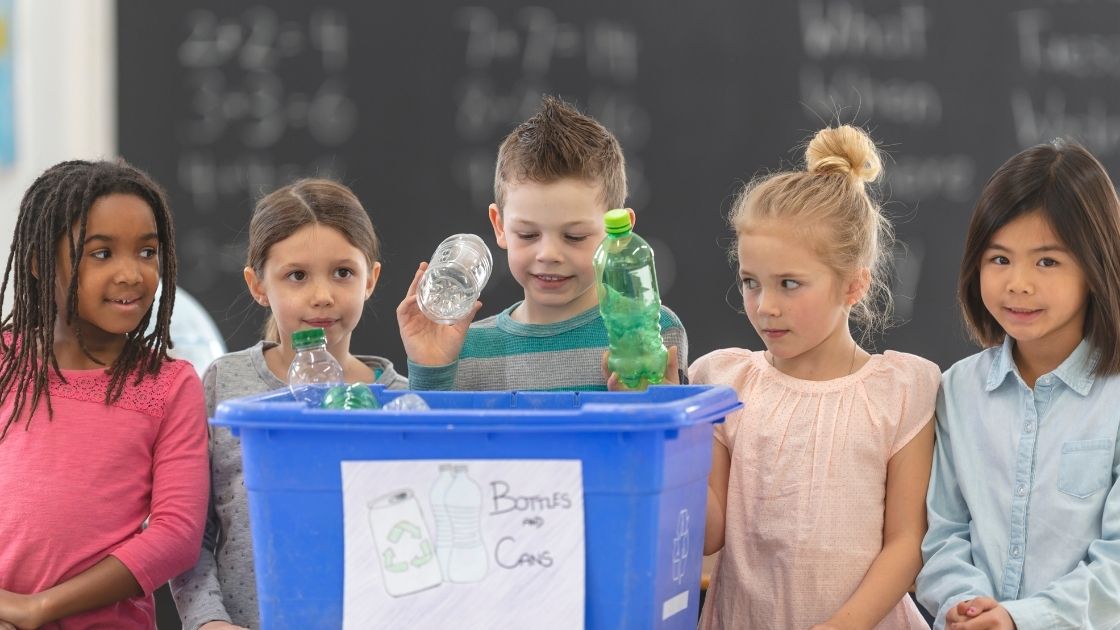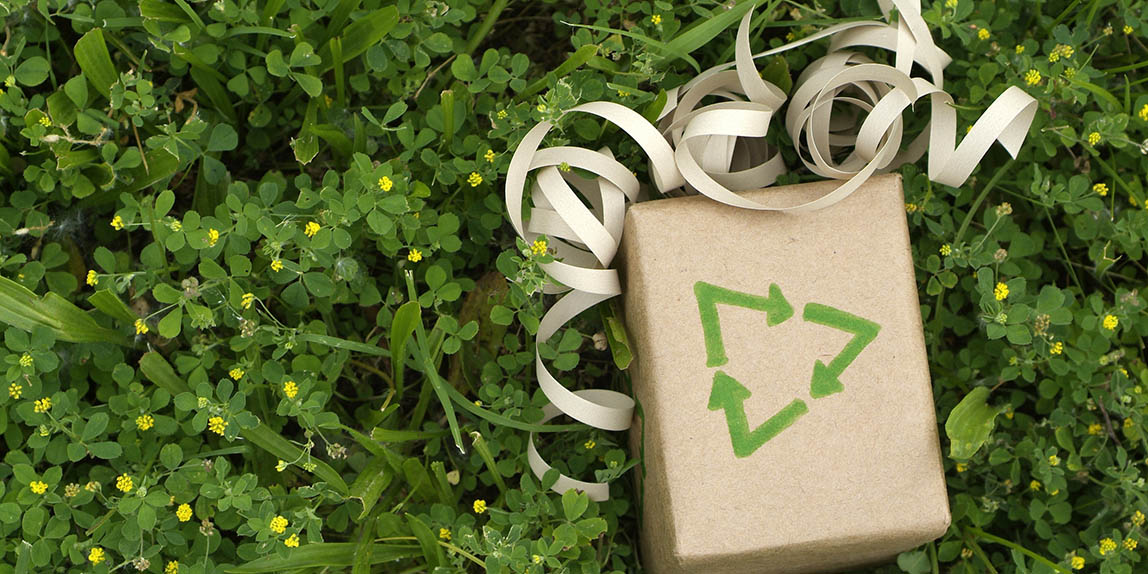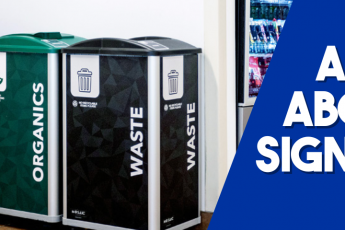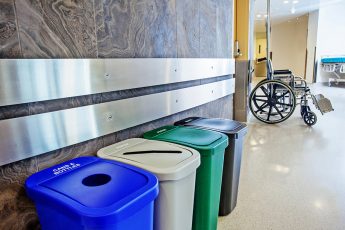
August 24, 2021 By Alec Cooley No Comments
Here’s a fun fact: the quick, easy way to distinguish jaguars from leopards is to look at the ring-shaped markings or “rosettes” each has on their coat. As I learned while writing a 3rd grade report, jaguars typically have a dot inside of the ring while leopards do not. I remember sharing this with friends and family members with a sense of authority. In a 3rd grade-sort of way, this early education gave me a special connection that’s lasted into adulthood.
I have an equally vivid memory of the anti-litter PSA commercial from the early 1970’s, and the impact it had on me. My mother still tells stories of how I went around picking up trash as a 7-year old. While my interest in jaguars never took on a professional dimension, I can draw a direct line between that PSA and my eventual career in the recycling and waste reduction field (and improbably, a nine-year stint working for Keep America Beautiful, the creator of the PSA).
Much of the work I do now revolves around how to influence recycling behavior. The research and best practices I cite are pretty clear, however. While a large majority of people say they are sympathetic to environmental issues, telling adults about the sustainability benefits of recycling has essentially no impact on their behavior. The most important thing is to simply give them “what” and “how” information, and encourage practices that reinforce recycling as a habit. Other messages, mostly centered around social-norming, are shown to motivate behavior in adults. But explaining how recycling an aluminum can reduces the need for destructive mining and drilling practices? Not so much.
The folks inclined toward environmental concerns are already on board. The average person, however, is more likely to retreat into an “I gave at the office” mode. Partly, that’s because the fundamental values and attitudes that determine our receptivity to environmental messages are largely formed by the time we leave high school. It’s also because as adults we get bombarded all day with things we must care about – making sure the mortgage is paid, getting kids to soccer practice, etc. We’re tapped out and well practiced at filtering optional things we should care about.
Kids are a different story. Without the competing interests that adults juggle, they’re open to hearing environmental messaging. Their natural sense of empathy means that any message they do absorb has potential to resonate in powerful ways that can mold a lifelong set of values.
This isn’t to say that recycling or general environmental awareness will lead to a passionate interest or drive career choices. It obviously nudged me into the recycling field, but on the other hand, I’m not a wildlife biologist studying apex predators in Central America (though I do still have an affinity for jaguars).
But, it does point to something important for recycling. Because even as the distractions of adulthood eventually catch up to them, the internalized awareness that a 3R-education (Reduce! Reuse! Recycle!) instills in a person is likely to result in greater receptivity when someone is asked to make recycling part of their daily rhythm.
Which is all a long-winded way of saying that recycling and waste reduction education is really important to do in schools!
Key Messaging to Communicate
Recycling is complex and there’s a lot of information to potentially communicate to students. We’re looking to prompt recycling and other waste reduction practices in the near term, but a core goal of this education is to convey general messages that will guide their actions into adulthood. So they obviously need to learn the basic ins-and-outs of how to sort items correctly. They need to know that recycling and waste reduction minimize the environmentally destructive practices necessary to produce consumer items. All standard fare. But I’d drill down further to several specific underlying messages you want them to internalize for the long term:
- Recycle right. Simply using recycling bins is not enough, it’s essential to understand certain items can be recycled and other can’t. The particulars of how to sort will change over time, but ignoring the distinction can do more harm than not recycling at all.
- Recycling alone is not enough. You’ve probably noticed how I keep including the phrase “and waste reduction” with each reference to recycling. Recycling helps, but the real issue is that we impact the environment anytime we consume something. Recycling a bottle or piece of paper doesn’t undo the environmental damage caused when that item was created, it simply makes it available as a less-damaging alternative (it still takes some energy to process scrap items into new ones). The only way we truly minimize our impact on the environment is by reducing what we consume in the first place, either by reusing or carefully deciding what you actually need and what you can get by without.
- Your actions make a difference. This may sound redundant with the last point, but it’s important to reinforce that their effort, in fact, does have an impact. Composting an apple core means it does not turn into methane in a landfill. When an aluminum can is made out of the old can someone recycled, that reduces the amount of energy needed by 95%. Behavioral research has shown that knowledge that one’s efforts lead to a tangible result… any result… is a key driver of recycling and other environmental or social behavior.
Examples of Effective Recycling and Waste Reduction Education
There’s a deep wealth of local curriculum and activity ideas to be found with a Google search. I want to focus on some case study examples that deliver waste reduction information through specific engagement techniques shown to be effective in impacting behavior:
Give students ownership: Green Teams
It’s one thing to receive information about waste reduction, but putting students in the driver’s seat with different aspects of the recycling program gives them a sense of authority and ownership. This can even be effective in influencing other students not directly involved when they hear from their peers instead of just adults. Many schools have some version of student ‘Green Teams’. Here are a few examples:
- Louis County EarthWays Sustainability Network (ESN) This effort coordinated across schools in three different counties in eastern Missouri recruits students to work in teams collecting recycling from classrooms as well as advocating and educating others.
- Douglas Elementary School, Boulder, CO students formed a Food Waste Club to raise awareness about the need to reduce, you guessed it, food waste! In addition to surveying their fellow students and doing an audit of the food scraps being thrown out in the cafeteria, they produced a video to raise awareness.
Here are a couple guides with tips on how to form a Green Team:
Hands on learning: Waste Audits
Educators understand that kids learn in different ways. And one of the best ways is to get your hands dirty (with gloves on) by doing a waste audit! Actually sorting through trash and recyclables can be eye-opening for people of all ages. The experience gives students insight into how much recyclable or compostable material is ending up in the trash, and just as importantly, allows them to see how their own actions, to recycle or not, are part of the larger school effort. The information from waste audits then allows the students to educate their peers on how well they’re diverting waste as a class or school. To take it another step further, students could use audits to identify and quantify items in the trash that likely could have been reused or avoided altogether.
- Charter Oak Elementary School, Hartford, CT Though earlier efforts to reduce waste at Charter Oak had led to diverting food waste to compost bins and replacing plastic utensils with reusable metal ones, students in 2018 decided these steps weren’t enough. Setting an ambitious goal to reach zero waste within 3 years, their first step was to organize waste audits. That didn’t mean a single audit by a Green Team, but every class doing an audit of the waste in their own classroom. The results were packaged into a detailed report that includes their methodology and analysis.
- Melcher-Dallas Elementary School, Melcher-Dallas, IA With help from the Iowa Waste Reduction Center, a team of students at Melcher-Dallas Elementary School coordinated an audit of the school cafeteria’s waste stream. Like Tom Sawyer’s strategy for painting a fence, rather than sort the trash themselves, they set up a system during breakfast and lunch for the other students to sort their own waste as they finished their meals. This allowed everyone to see how much waste they personally consumed and discarded.
- Organize your own Waste Audit! Waste audits come in different shapes and sizes depending on your objectives. With a little preparation, student-led audits are not difficult to organize. Here’s a step-by-step planning guide prepared by EarthTeam Environmental Network.
Make it Social
Peer pressure is often thought of as a bad thing, pushing kids to do things they shouldn’t. But of course, the underlying dynamic – the desire to fit in, to feel apart of cultural norms – is fundamental to human nature. Activities that reinforce a sense that “recycling is what we do” can be incredibly powerful to drive student participation.
- Mug shots! Ok, this example is more geared toward college students and office workers, but it’s one of my favorite examples of how to build culture, and will hopefully inspire your own ideas. The idea is to riff off the theme of FBI Wanted posters, publicizing photos of people with their reusable mugs on social media or flyers posted on bulletin boards. It both recognizes people for avoiding disposable cups, and demonstrates reusable mugs as a norm others should use.
- Caught Green Handed This is a similar activity, also adapted from college-level recycling engagement. The idea is to watch for students who recycle or do another waste reduction practice on their own, and randomly surprise them with a small treat and public recognition. Rewarding someone for doing the right thing, of course, reinforces that they should continue doing it. By making a splash and announcing you’ve caught someone out loud to others in the vicinity, you let them know they, too, could get caught!
- Pledge to Recycle The same reasons that we have kids start the day with the Pledge of Allegiance can easily extend to recycling. A commitment to do something is a powerful way to get people to internalize a message. By making a pledge in front of their peers, students also accept a degree of accountability to follow through. And of course when they see their friends and classmates making the same commitment, it reinforces the social norm that recycling is something everyone does.
Get Competitive
The competitive spirit is strong in kids, so put it to work! Whether it’s getting to students to strive toward personal recycling goals, or having them compete in teams, activities that incorporate waste reduction with a sense of challenge are a great way to motivate students.
- Montgomery County Public Schools, MD This school district’s SERT program (School Energy & Recycling Team) holds an annual Got Paper recycling contest that challenges students and teachers at the end of the year to clean out their old files. The school within the district that collects the most on a per capita basis is crowned the winner on the SERT website.
- Collier County School Recycling Challenge, FL The Ready-Set-School Recycling Competition is held between elementary, middle school, and high schools throughout the district each January through March. Schools report how much they recycle each week in pursuit of the Champion Recyclers title, and the opportunity to host a 5 ft. tall award for the coming year.
- Keep California Beautiful’s K-12 Recycling Challenge The same concept as Collier County, but this challenge is open to any school throughout California.
Provide shovel-ready resources to individual schools
Planning and managing effective school engagement activities can be very challenging at the school level, especially where responsibility for outreach efforts fall on an individual teacher. Districts, local governments, and/or waste management authorities can enhance their ability to engage students by organizing off-the-shelf resources that can be used at individual schools. Some examples:
- GrowNYC School Recycling Resources GrowNYC is a non-profit organization that partners with New York City’s Department of Sanitation to support to local schools with a number of waste reduction resources, including:
- At-Home Choose to Reduce assignments
- This guide provides an A to Z overview of everything schools need to get a collection and student engagement program going.
- StopWaste – Alameda County, CA Alameda County’s StopWaste authority has a model program to support waste reduction at schools. Their entire website is worth scrolling through, but here are a couple stand out sections:
- Smart Cafeteria Initiative. This county-wide program pairs education curriculum with technical assistance to help individual schools reduce waste in their cafeterias as well as raise awareness about the food recovery hierarchy.
- Curriculum, activity sheets & even comic books! StopWaste has a wide library of materials organized by K-3rd grades, 4th grade and 5th grade- high school can be downloaded and distributed.
- Transfer Station Field Trips
- Simcoe County District School Board, ON: This school district in Busch Systems’ home of Ontario, Canada supports its schools with a range of recognition programs, posters, and other resources including:
- PA Sample Announcements that can be shared with the entire school.
- Fun videos! Here are two of my favorites, one based around a game show theme and another about how to know if something is recyclable.
- Mobile Education Unit – Traveling Classroom. Schools can schedule to have this 35 ft trailer full of interactive games, education graphics, and other waste reduction resources brought to them.
- Portland Metro, OR:
- Expert Presentations. Normally done in-person, during COVID these expert talks have been made available through remote presentations for elementary schools and middle and high schools.
- Classroom Kits. Schools can check out kits organized around different lessons plans. These include materials designed for different age groups on a range of topics, including examples of what to recycle, composting with worms, and understanding the ecological footprint of consuming natural resources.
- Montgomery County Public Schools, MD
- Order recycling supplies online. Schools that need recycling bins or education posters can order these with an easy-to-use web request form. They can also download flyers, tip sheets and signage from the SERT website.
- School Recycle Data. An important way to encourage recycling and waste reduction is to benchmark your own effort. The district makes data available for all schools, allowing teachers to share with students how their efforts are paying off (or need to pickup!)
What are your experiences in educating & inspiring K-12 students to recycle and reduce waste? Do you or your school have any programs in place we should know about? I’m interested to hear your perspective. Contact me at alecc@buschsystems.com.












